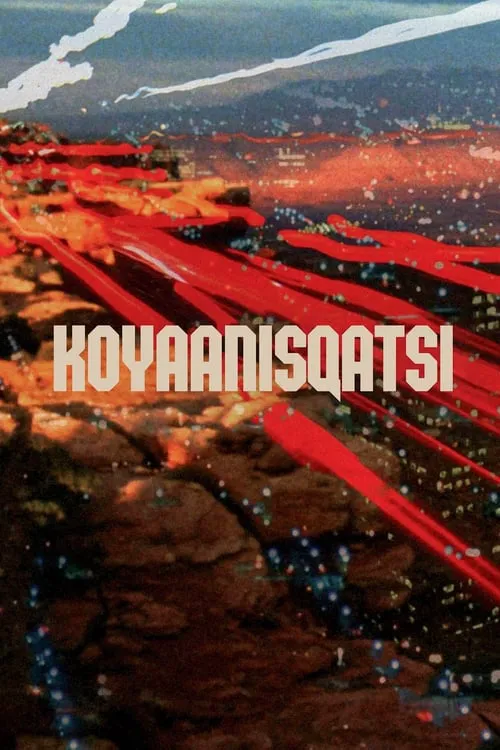Koyaanisqatsi

Plot
Koyaanisqatsi, a cinematic masterpiece crafted by director Godfrey Reggio, is a visceral and thought-provoking visual poem that critiques the devastating impact of modern technology on humanity and the environment. Shot in the early 1980s, this tone poem eschews traditional narrative structures, eschewing dialogue and narration in favor of a poignant and meditative visual language that speaks directly to the senses. The film's title, Koyaanisqatsi, is derived from the Hopi Native American language, meaning "life out of balance." Reggio's cinematography masterfully illustrates this concept, taking the viewer on a poignant journey across the United States, exposing the intricate web of relationships between technology, human society, and the natural world. Through a series of striking images, juxtaposed to create a powerful emotional resonance, Reggio conveys the sense of disconnection and despair that has arisen from our increasingly mechanized and alienated existence. Koyaanisqatsi is a film without words, yet its message is conveyed with unflinching clarity. It begins by depicting the majesty of the American landscape, showcasing the sweeping vistas, majestic mountains, and endless plains. But as the film progresses, these images give way to the harsh realities of modern life: industrialized cities, congested highways, pollution, and the desecration of pristine landscapes. Reggio's camera captures the cacophony of urban life, from the thunderous sounds of construction to the hum of machinery, while the eerie silences of wilderness spaces serve as a poignant contrast. The use of non-diegetic music, composed by the renowned composer Philip Glass, enhances the film's emotional impact. Glass's score is a mesmerizing blend of rhythmic patterns and haunting melodies that evoke a deep sense of unease and disquiet. His music serves as a metaphorical underscore to the images on screen, heightening the tension between the natural and the technological. Through this innovative application of music, Reggio and Glass create a visceral experience that assaults the viewer on multiple levels, engaging both mind and emotion. Koyaanisqatsi's cinematography is a masterclass in visual storytelling. Reggio worked closely with cinematographer Ron Fricke to craft a visual language that is both poetic and unsettling. Fricke's camerawork ranges from the intimate and claustrophobic to the sweeping and majestic, often blurring the boundaries between reality and abstraction. The film's use of long takes, slow motion, and time-lapse photography adds to its hypnotic and dreamlike quality, drawing the viewer into a world that is both familiar and foreign. One of the film's most striking aspects is its exploration of the human relationship with technology. Reggio critiques the notion that technology is a panacea for humanity's problems, instead revealing its capacity to dehumanize and alienate us. Images of factories, machines, and computer systems juxtaposed with footage of people trapped in their daily routines serve as powerful reminders of the trade-offs we make in embracing modernity. This is a film that challenges us to question our values and examine the true cost of progress. Koyaanisqatsi is also notable for its exploration of the American identity. Reggio's camera documents the country's urban sprawl, but also shows the remnants of an authentic American heritage: the Native American reservations, the Amish communities, and the rural landscapes that have been left untouched by industrialization. In these spaces, Reggio finds a deep sense of connection to the land and to each other, which serves as a powerful counterpoint to the disconnection and despair that pervades the rest of the film. Ultimately, Koyaanisqatsi is a call to action, a plea for humanity to reevaluate its values and find a more sustainable path forward. Reggio's film challenges us to reconsider our relationship with technology and the natural world, and to seek a more balanced and compassionate way of living. Through its breathtaking images and haunting music, Koyaanisqatsi reminds us of the beauty and fragility of the world we inhabit, and the urgent need to find a way to live in harmony with both each other and the land.
Reviews
Recommendations




